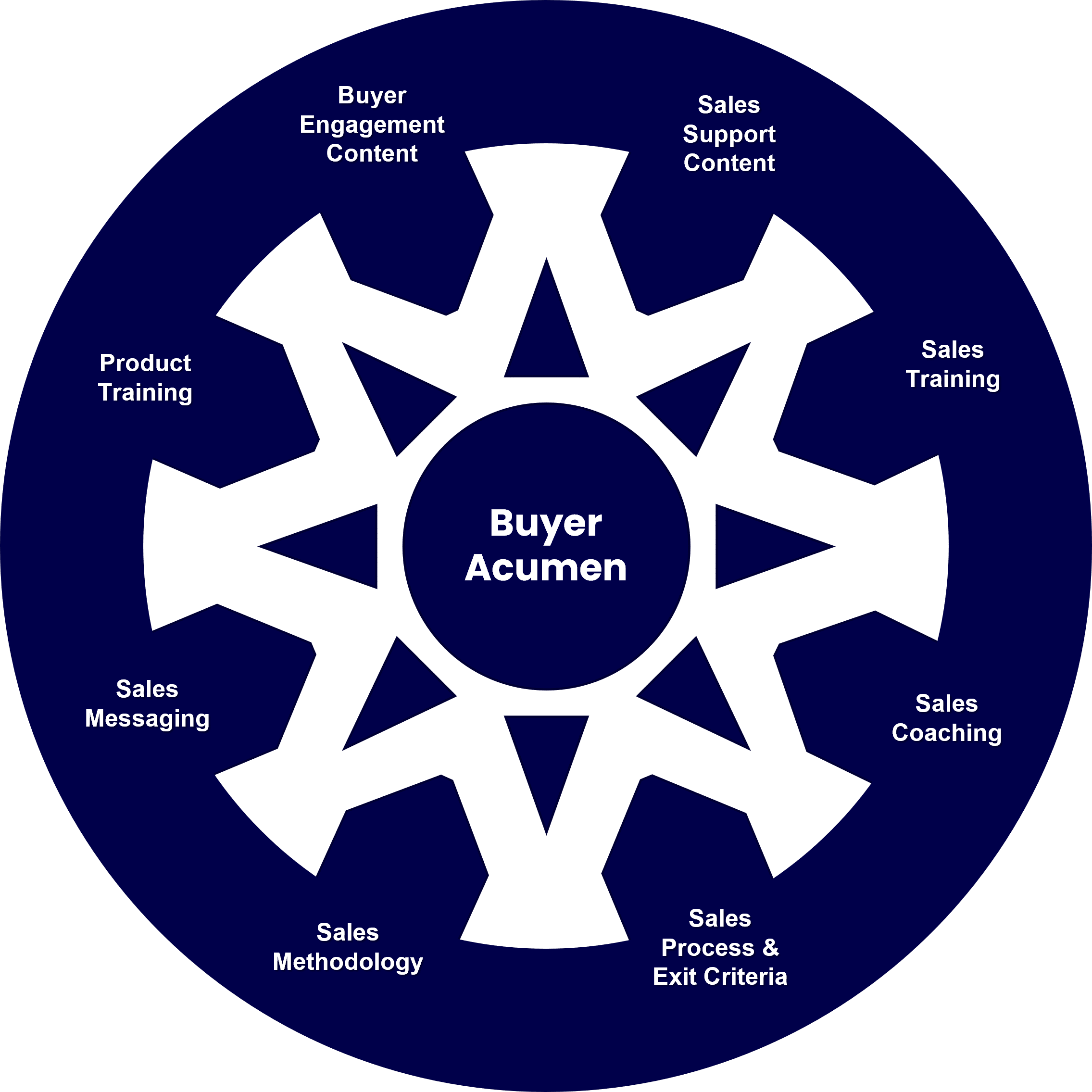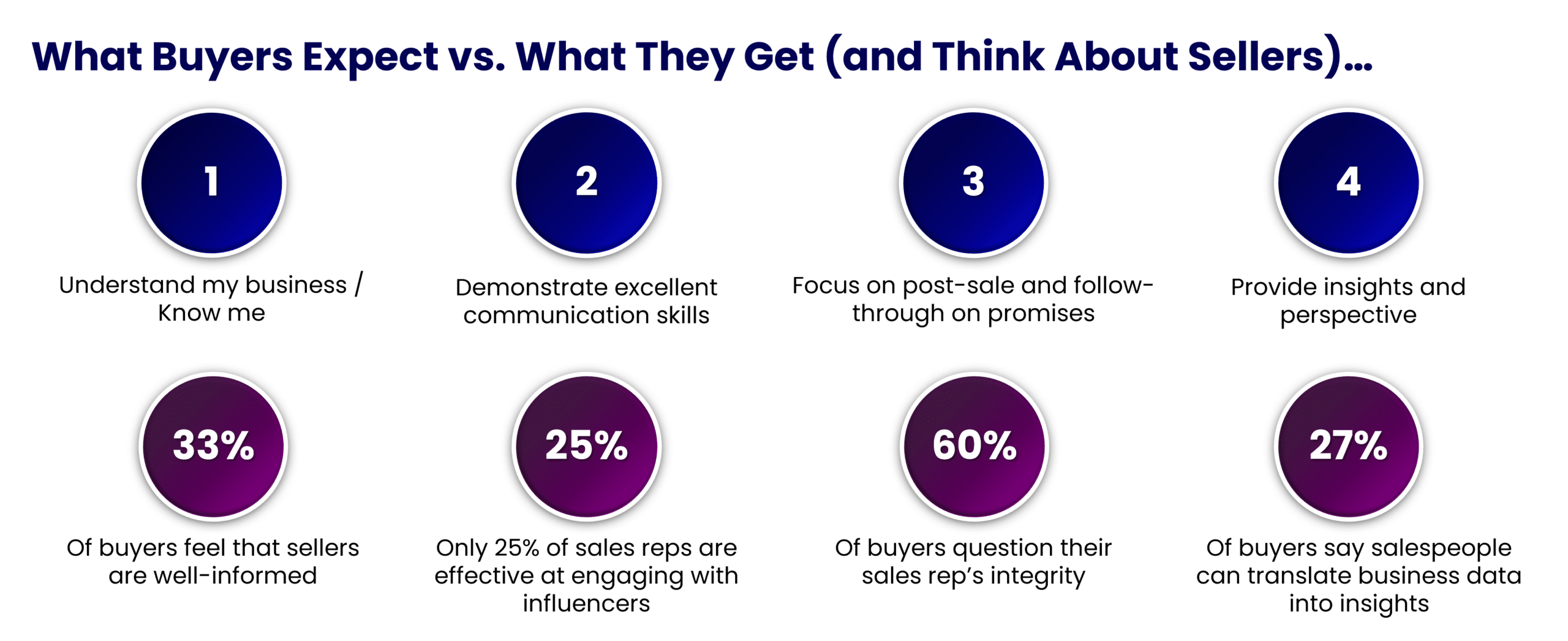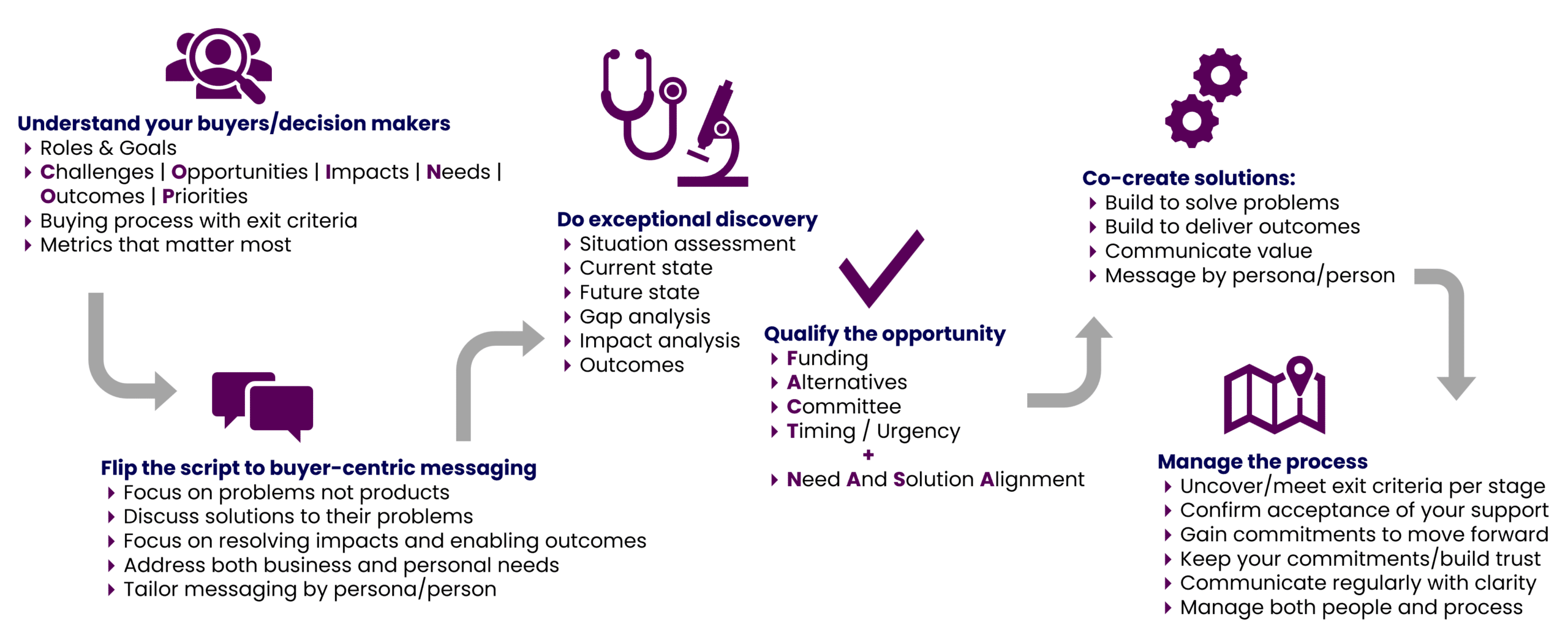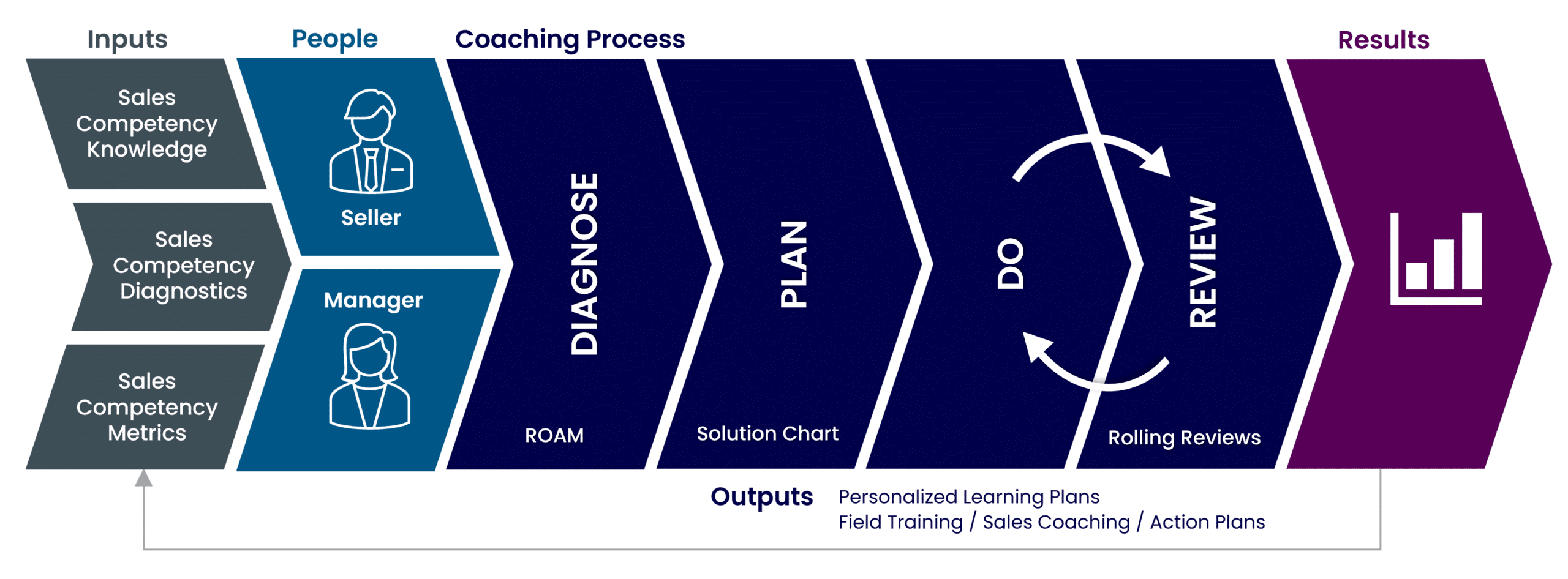Company leaders who do not understand the nuances of modern sales force effectiveness can inadvertently hinder the success of their organization. At a minimum, this lack of awareness results in less-than optimized results. In a worst-case scenario, it can cripple the effectiveness of a sales force.
After almost five years working in the wholesale distribution sector, despite much discussion at conferences about industry disruption and the need for sales transformation, I still see many companies working in what I call “the sales prevention business.” Meaning that there is tremendous opportunity for distributors to radically improve their sales effectiveness, sales productivity and sales profitability.
In this post, I will share how you can exit the sales prevention business and take positive, practical steps toward optimizing the effectiveness of your sales force.
Start with Buyer Acumen
In my book, The Building Blocks of Sales Enablement, I define buyer acumen as a deep understanding of your buyers and customers (for simplicity here, I’ll just call them “buyers”). At a high level, buyer acumen includes buyer personas with roles and goals. At a deeper level, it includes factors such as:
- COIN-OP: The Challenges they face, the Opportunities they might capitalize on, the Impacts or risks of not addressing the challenges/opportunities, the Needs their situation creates, their desired Outcomes and the Priorities of those needs and outcomes.
- Other Risks and pressures: In addition to COIN-OP, what other risks, pressures, preferences or internal company politics might influence your buyers?
- Metrics: How are they measured in their company? What are the metrics that matter most to them (often related to the impacts and outcomes of COIN-OP) and how do they and their leaders define success in their role?
- Budgets: What are their typical budgets, their span of control, and their purchasing authority?
- Buying process: What is their typical buyer’s journey and how do your buyers make their purchase decisions? What’s the process they go throughand who do they interact with internally during it? What are the most common decision criteria? And for each buyer persona, what are their buying process exit criteria in each stage of the process? The buying process exit criteria are whatever they need to see, hear, feel, understand and believe in the current stage to be comfortable moving forward with you to the next stage.
- Company size: If it applies, in what size company or verticals do they typically work? If this matters, it will help further define your ideal customer profile (ICP).
-
Value perception: How do they define value? Is it:
- Business value: financial and operational metrics
- Aspirational value: aligned with mission, vision, values, or critical issues such as DEI or sustainability
- Experiential value: improvement of process or experience, such as employee, candidate or customer experience
- Personal value: something that matters to them as an individual, often tied to emotional factors, such as reducing risk, appearance, increasing political capital, a sense of accomplishment, etc.
Note: The answer is usually a mix of these values and always includes some personal/emotional factors.
I suggest hiring an expert for your general persona research, but even then, you may not be able to get to a deep level for all these factors. You will, however, be able to lay a foundation. Later, when your sellers are engaged in an opportunity and working with an account, they need to uncover these details with their real buyers, to go past the persona to the real people.
The reason this is so important is that buyer acumen is like a hub and spoke system, where many things branch out from a solid foundation. Get buyer acumen right, and those other elements are far more impactful.
[Click the image to view a larger version.]
Redesign Sales Models and Sales Process
Based on the above buyer acumen work, you may want to redesign your sales models and sales processes to better align with your buyers’ preferences.
- Redesign your sales models to support how buyers want to buy from your business. It’s how you go-to-market with your marketing, content, ecommerce, inside sales, field sales and channel sales organization structure.
- Redesign your sales process to support how buyers want to engage with your sellers and seller support teams. It could include digital buying options with chat support, decision support or buyer engagement content for buyers and customers, expert support received from your sellers, and customer service or success teams. Once a lead is generated, how do you facilitate and support the buyer’s journey? Once they’ve purchased, how do you ensure satisfaction?
Buyer engagement content and processes should be designed to generate awareness, interest and relationships (AIR) and to uncover, clarify, satisfy and confirm satisfaction of the buying process exit criteria. This all ties back to buyer acumen.
Fully Adopt a Buyer-Centric Sales Methodology
In the general market, buyer dissatisfaction with sellers is at an all-time high.
[Click the image to view a larger version.]
This is fortunately less true in distribution, a mature vertical where we have sold on strong relationships and momentum for so long. However, as more younger professionals move into buyer roles, this is changing. Momentum fuel and old relationships will not carry distribution forward for much longer. We need to be more purposeful about how we sell.
In addition to the sales methodology adjustments above, we also must evolve. We need a single, aligned approach to selling with a common language, versus a free-for-all or mix-and-match blend. The methodology aspects that are critical for modern B2B selling are:
- Buyer centric: A complete mindset and skill-set shift to operating in the buyer’s best interests and selling the way they want to buy.
- Consultative: Operating as a consultant to diagnose problems, co-create solutions and provide expert advice and solutions.
- Value focused: Working to understand what buyers value, co-creating solutions that will deliver that value, and developing compelling business cases, as needed, to communicate that value.
- Outcome oriented: A focus on the financial or operational metrics that matter most to your buyers and the delivery of solutions that will produce the desired outcomes.
- Communication based: A modern methodology should be less focused on traditional selling skills and more on excellent listening, interpersonal and communication skills. Your methodology should rely only on ethical influence and persuasion, once you know you have need-and-solution-alignment (NASA) and are operating in your buyer’s best interests.
Example of a Buyer-Centric Selling System
[Click the image to view a larger version.]
Whatever sales methodology you build or buy, these are the foundational elements of the selling system of the future, and you should ensure yours meets these standards. A litmus test I use is this:
If your sales training materials accidentally fell into the hands of your best customers, would you be mortified, or proud?
Choose wisely, and make sure you’d be proud.
Implement a Sales Management System
[Click the image to view a larger version.]
People have mixed feelings about the idiom, “the inmates are running the asylum.” I understand the potential insensitivity inherent in the statement. But I’m going to use it, because it’s a time-worn phrase that is generally understood to mean that those who are not technically in charge or who are least capable of leading an organization, are directing its course. In other words, those who should be leading, aren’t.
In many distributors, there is a very loose sales management system, if any at all. It’s a bell curve, of course, but many have almost self-directed sales forces, where sellers direct their own activities. There is no aligned process and methodology, no CRM, little if any pipeline, forecast, quota management and limited accountability. In many cases, sales coaching is non-existent or completely opportunistic. In essence, “the inmates are running the asylum.”
If you want to optimize your sales force and maximize its potential, you need an enabled and empowered but management-directed sales force. And, you especially need a sales management operating system (smOS). In the above graphic, the smOS is everything to the right of the box.
Ensure Sales Coaching Excellence
Sales coaching is part of the smOS, but important enough to call out. This is a two-point strategy. The first is to invest in your front-line sales managers to make them force multipliers, who can radically improve company performance. The second is to invest in your sellers, by creating a coaching culture, and getting managers and their teams into a cadence of continuous improvement.
[Click the image to view a larger version.]
Embrace Sales Analytics & Technology
While many leading distributors have come a long way in terms of digital transformation, many still have a long way to go. The right technology and software tools can:
- Support sales process activities including prospecting, opportunity management and account management.
- Support sales rep diagnostics and sale force performance analytics.
- Support guided selling to better direct rep activity, and support customer decision-making.
- Support management reporting, to better manage activity and outcomes.
I’ve said before that B2B sales reps don’t need to fear losing their jobs to artificial intelligence. Instead, they should fear losing their jobs to other sellers who maximize AI tools. With the recent proliferation of AI tools and especially generative AI, we may finally be on the verge of this happening.
The same is true for organization leaders and senior sales leaders. While we need to take a reasonable and measured approach to implementing sales technology based on strategy versus a penchant for pursuing bright shiny objects, ignoring the technology and efficiency and effectiveness outcomes it can produce, is a significant risk.
Keep an eye on the horizon for emerging developments while making wise investment choices that you can integrate into your business processes to deliver intended outcomes.
Closing Thoughts
These steps – while not encompassing every aspect of a fully digital or sales force transformation – will radically transform your sales force effectiveness and help you exit the sales prevention business in 2023 and beyond.
Mike Kunkle is an internationally recognized expert on sales enablement, sales effectiveness, sales training, sales coaching, sales management, and sales transformations.
He’s spent over 30 years helping companies drive dramatic revenue growth through best-in-class enablement strategies and proven effective sales systems.
Mike is the founder of Transforming Sales Results, LLC where he designs sales training, delivers workshops, and helps clients improve sales results through a variety of sales effectiveness practices and advisory services.
He collaborated to develop SPARXiQ’s Modern Sales Foundations™ curriculum and authored their Sales Coaching Excellence™ and Sales Management Foundations™ courses.
Mike's book, The Building Blocks of Sales Enablement, is available on Amazon, with others coming soon in 2026, starting with The CoNavigator Method for B2B Selling.






